During the three months we circumnavigated the island continent--clockwise, but driving on the "wrong" side of the road--white Australians typically made one of two comments as soon as they heard our accents:
1) "What about America's Cup, then, mate?" In September, the US had lost the world's premier sailing race for the first time in 132 years to Australia. Winning the cup was a BIG deal for a former prison colony with an inferiority complex
2) "Crikey, you've seen way more of this country than I have." True that--foreigners do generally see more when they visit. But more easily achievable because the country's arid interior was mostly uninhabitable by anyone other than the Aboriginal people.
Victoria
After leaving St. Andrews, we headed west to Southern Australia on the Great Ocean Road. Traffic was heavier than at any other time of the trip, and holiday travelers jammed the commercial campsites.
 |
| London Bridge |
 |
| Apostles |
South Australia
Adelaide, the capital of South Australia, reflected British colonial influence but it also celebrated Aboriginal culture which, in our experience to date, had been entirely hidden.
 |
| Lake Torrens Rowing Clubhouse |
 |
| Arts Festival Mural |
We toured the
Barossa Valley and bought several boxes of superb, inexpensive wine.
I won't lie: spending day after day in
my father's company wasn't always easy but our alcohol-fueled conversations around the campfire enabled me to get to know him as something other than a parent. I hoped I might be able to return the favor and come out to him but I never got THAT drunk.
 |
| Flinders Range |
 |
| St. Mary's Peak, Flinders Range |
A couple of tight close-up photos I took in Australia, and that have been hanging in my bedroom ever since, began my life-long fascination with what I call "abstractions." You're not supposed to know what they are unless you're told.
 |
| Bark, Eucalyptus Tree |
We camped New Year's Eve on the side of a fenced road and welcomed 1984 with sheep, parrots and a delightfully chilled Pinot Grigio.
The mostly coastal
Eyre Highway connects South Australia to Western Australia.
 |
| Great Australian Bight |
Where else can you see road crossing signs like this?
The highway traverses the
Nullarbor ("no trees") Plain. Aside from the occasional
road train, enormous trucks with multiple trailers, and water supply stations, we didn't see much for nearly a thousand miles.
Western Australia
I grabbed the Walkman for a solo beach hike and watched the sun set over the
Archipelago of the Recherche, a Proustian name if ever there was one, while listening to Nona Hendryx's
B-Boys.
Boys will be boys
Boys, they like their toys
Boys will be boys
Boys, they like their toys
You’re hot, you got such a knack for sex appeal
(You know you’re hot with what you’ve got)
And I’m not, I’m not afraid to foot your bill
You’re so cold, you take such pride in your control
(You know you’re hot with what you’ve got)
So you’ve been told you’ve got the thing I need to hold
(I want a lot of what you’ve got)
So come on over
Come down from your pedestal
Why don’t you look me over?
There ain’t no need for her to call
You see me call
Hands down, Western Australia--aside from a brief stay in Perth--was the remotest place I'd ever visited, including
Alaska.
 |
| Bird Barge, Albany |
 |
| Lawn Bowling |
The Indian Ocean was across the street from the "holiday flats" where we stayed in
Perth. Ken really did live in his cut-offs.
 |
| Westhaven Holiday Flats, Perth |
I art directed this suggestive photo before heading to
Swanbourne Beach in hot pursuit of some clothing optional cruising.
 |
| Cottsloe Beach, Perth |
Ken hit the docks in
Fremantle where he photographed exports of shark fins (hanging out to dry) and live sheep.
You might think we would have stayed put for a week or two but we had places to go and things to see on the
North West Coastal Highway.
 |
| Murchison River Gorge, Kalbarri National Park |
This part of the country is too underpopulated to sustain passenger or freight rail service.
 |
Railroad Terminus
|
 |
| Banana Plantation, Carnavon |
We carried both gas and water--lots and lots of water--in the Kombi.
 |
| Port Hedlund Salt Mine |
It kept getting hotter and hotter. Showering seemed safer than risking fatal jellyfish stings in the Indian Ocean.
Marine hazards didn't deter the mostly Japanese pearl divers buried in a nearby cemetery.
White ant mud hills outnumbered human habitation exponentially.
 |
| Hall's Creek |
Did an Aboriginal artist sculpt a face onto this creepy ant hill?
 |
| Hall's Creek |
Northern Territory
Open windows and profuse sweating didn't provide much relief from the heat during the hottest month of the year (average high temperature: 96.6 degrees) once we crossed the Tropic of Capricorn.
We met these young motorcyclists in
Timber Creek. They were even more intrepid than we.
Cloudy skies over
Nitmiluk National Park brought the temperature down a bit. Friendly wildlife treated us like neighbors.
 |
| Kangaroo & Joey |
 |
| Emu |
Our campsite was perfectly equipped for a clothesline.
We took a boat tour of what was then called Katherine Gorge.
Ken occupied the captain's seat briefly
The water level peaked during the wet season, which had begun a month earlier.
You barely can make out the Aboriginal art on this exposed slab of sandstone.
I couldn't wait to dive into the relatively cool water after making sure that Ken was ready to snap a mid-air photo.
We explored as far north as Darwin, Australia's smallest provincial capital, in sauna-like heat and spent much of a morning cooling off in an air conditioned shopping mall while buying more provisions. The charmless city--which had the super macho vibe of a frontier settlement--succumbed to the lure of Australia's
Red Centre. En route, we encountered some minor highway flooding after the daily downpour. It wouldn't be the last.
 |
| Stuart Highway |
 |
| Karlu Karlu |
Alice Springs (remember "
A Town Like Alice" on PBS?) brought more flooding the next day, unusual for an extraordinarily dry area.
Our travels had taken us through
Fitzroy Crossing where piles of beer bottles lined the road and nearly every adult Aboriginal man was staggering drunk. But in Alice Springs, many, though not all, Aborigines catered to the tourists who came to see
Uluru.
Check out this child's pet.
We took a break from our box wine and drank a "middy" of ice cold
Foster's Lager in what Australians call a "hotel." G'day mate!
Queensland
Road trains continued to obsess Ken.
 |
| Flinders Highway |
Water wasn't the only impediment on our route back to the east coast.
 |
| Flinders Highway |
 |
| Cape Tribulation |
This sign marks the end of the
Cook Highway.
 |
| Airlie Beach Dock |
 |
| Coral Reef |
Lousy weather put the kibosh on the glass bottom boat tour, something I'd always wanted to do since seeing Doris Day star in a ludicrous comedy of the same name. Instead, we descended into an iron-lung-like viewing portal and watched brilliantly colored fish dart through the healthy corals, now significantly decimated by global warming.
Driving south on the
Bruce Highway from Cairns, we encountered a verdant landscape that included sugar cane and tropical fruit plantations.
You can catch a train in Queensland.
 |
| Finch Hatton |
It seemed as if it never would stop raining. We spent a couple of wet days at Eungella National Park where I actually did spot a platypus. Such strange critters, the only venomous mammal and hard to tell the head from the tail.
 |
| Kookabura |
New South Wales
Our last leg of the journey took us back to the province where we began our road trip and where most of the people played.
 |
| Surf Cat @ Nelson Bay |
 |
| Apsley Falls, New South Wales |
We feasted on two kilos of jumbo prawns on our last night camping in the Hummer, throwing the shells on yesterday's news.
We sold the Kombi to a buyer in suburban Sydney but not before I dropped Ken at the
Royal Australian Air Force base in Richmond where he caught a military transport plane back to the United States.
It was quite a trip. But these photos tell only the parts of the story that could be seen. There's so much more.
More Australia:

































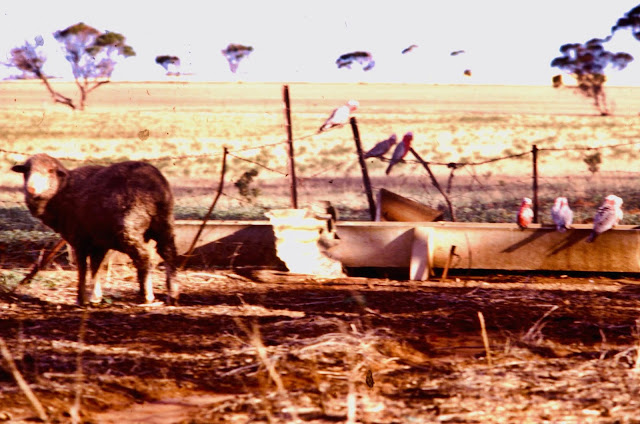
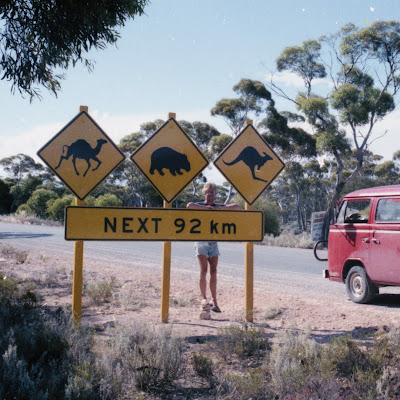
















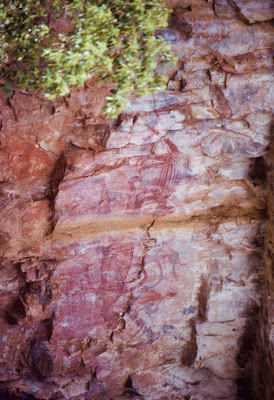














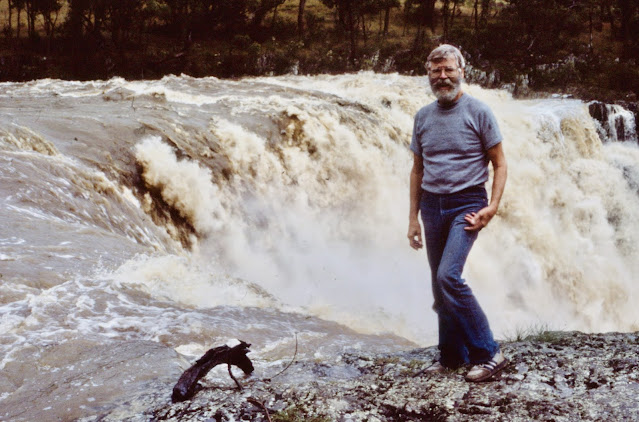


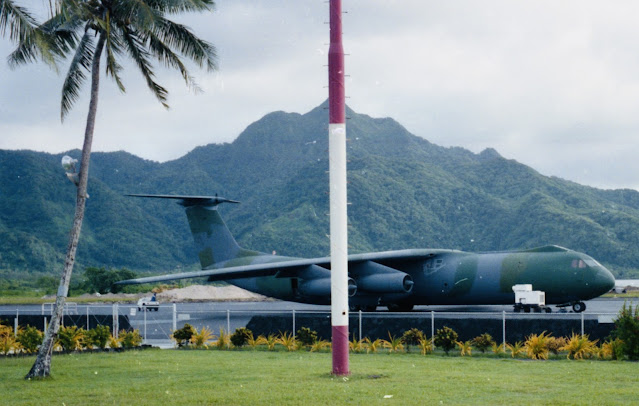


No comments:
Post a Comment